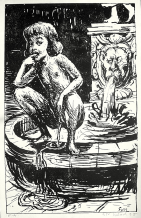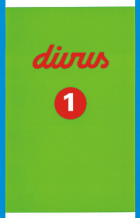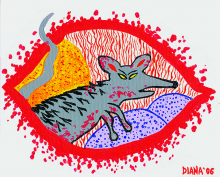| Zeitschrift Umělec 2002/4 >> Multiplication of centers and the cool beauty of a triennial in Vilnius | Übersicht aller Ausgaben | ||||||||||||
|
|||||||||||||
Multiplication of centers and the cool beauty of a triennial in VilniusZeitschrift Umělec 2002/401.04.2002 David Kulhánek | triennial | en cs |
|||||||||||||
|
To a native born Middle European, nursed in the “heart of Europe,” it will surely seem strange how far the “Center,” to which he automatically indorses himself, can be moved. It seems that a hidden war of “middles” is happening in Europe - cultural, purely optical and also geographical, measured by engineers. Whoever searches finds. So it is no surprise that in Lithuania they make cogent arguments supporting the fact that 24 km north of the capital Vilnius, lies the real center of Europe.1 Vilnius is the most eastern capital of the future extension of the European Union and this peripheral location predetermines it to a certain exceptionality. To speak here of a middle makes sense.
However, in the era of the Internet, the domination of webs, fractals and various orders of chaos all centers are losing much of their former power. Nevertheless they still hold sway: magnets, jungles, expanding volcanoes, but also social traps, black holes or impenetrable fortresses of bureaucratic apparatus a la Bruxelles. Tobias Berger, German curator of the 8th Baltic Triennial of International Art in Vilnius (14 September to 3 November 2002), thought of the center as a flexible and ambiguous term. Anyway, how else could it be. The theme of the triennial is so precisely labeled - Center of Attraction - that it is necessary to complicate and test its borders. The problem of middles was not possible to resolve, but there was some excellent beating around the bush. The triennial was organized by Contemporary Art Centre (CAC) in Vilnius, the most important and only institution of its kind in Lithuania (let’s hope there is no threat to its monopolistic ham handedness). It is an ambitious institution that is building an international position. The exhibition took place in two locations - in the late modernistic building CAC directly in the center of the town, and in the former printing house in nearby Maironio Street. Lithuianian artist Deimantas Narkevičius and Eglé Rakauskaité presented their videos shot in the surroundings of Vilnius. Narkevičius dryly mapped the journey towards the mentioned center of Europe and Rakauskaité shot the suburban market Gariunai, which is one of the biggest in Europe and where one can allegedly find everything from general products to cars and weapons. How long will it be able to battle the new global style shopping centers that now proliferate in Lithuania? The Dutch couple Jeroen De Rijke/Willem De Rooij used a time-collecting procedure while anonymously recording slums on the outskirts of Djakarta - a stationary camera observed the dawn and morning in the district of the outcasts near the dump. A second projection by this pair consisted of shots of a deserted Islamic graveyard vegetating among administrative buildings in an Indonesian metropolis. From the other center of the world comes Sarrah Morris’ film Capital, which was shot in Washington, D.C. It is a collage of impressive, monumental pictures from the American capital city that quickly runs through a sequence of fast cuts. The city where the power and economy levers of the planet meet is portrayed as a thriller scene. The nervous pulse of runners in the park, Clinton’s helicopter, optically cutting the obelisk in front of the White House to pieces, the sweaty foreheads of businessmen in waiting halls and a frightening black colony of president’s limousines. One is almost afraid to buy a plane ticket to fly over the Atlantic. Santiago Sierra in 1998 set off a traffic disaster when he hired a tractor driver to block a busy highway in Mexico City for five minutes. As if face to face with the film of Sarrah Mossis, the viewer stands in the passive role as “victim of the system” in front of a modest projection of subversive action, one could find again the ground under one’s feet. Mark Lombardi - a deceased American artist - created a remarkable collection of “pure” drawings, schemes full of arrows and names that illustrate financial flows and shifts, concerning specific people and their ranking in corporations. For example, the scheming of the Bushes clan are truly effective, on a black background with a red and white lit up network of economic relations. Latvian artist Gints Gabrans also dealt with economic “miracles.” The popular game “plane” (also “pyramid”) to which many gullible people fell victim in the time of the establishment of capitalism in the Eastern Europe, also had its winners. The record from the meeting of these successful builders in Riga creates a horror - the openly shared emotions from gained assets changed into an orgiastic crowd, ending with songs of praise to Latvia. This record was framed by two projections on which one could see the “resurrection” of a homeless man. From the street that lucky man made it directly into luxury shops and a cosmetic lounge where his visage completely blended in. This work cast the shadow of a lack of information about the fate of this person (was this acted fiction or was the poor man thrown back again after the shooting?) Besides his older Colony, Ján Mančuška also exhibited a new set of works in Vilnius - drawings and artifacts documenting the “branches of reality” in all directions - it is enough to grab a point to hold on to (for example, a list of things that one has to buy). Hendrikje Kühne/Beate Klein built a model of some kind of oasis from clippings of advertising materials of travel agencies. Every country has its own miniature pavilion. Lukasz Gorczyca likes to go back, even though it’s mostly as a curator, to the 1970’s and 80’s, to the time of his childhood and to the completely unrepeatable atmosphere of socialist lifestyle from that period. His collection of postcards from every possible Polish town and their late modernistic, mostly dominating prefabricated buildings, consists of about 3000 items. Vladimir Archipov is a collector of objects, whose Russian creators could very well compete with the most courageous creations by our Czech gardeners. Mapping and the collection of data on immediate surroundings appeared as another of the possible areas of the center. Japanese artist Taro Shinoda exhibited meditative, kinetic light object - a milk-filled pool, around which machines with white fluorescent lights mechanically drive. Connecting life-giving fluids and the techniques of creating a place for concentration according to ancient Japanese temples. Canadian Nathalie Melikian presented her “scenic” project - on white spaces you discover commentary-descriptions of film scenes, accompanied by the appropriate sounds. But of course the images were missing, and instead there was just the white background (canvas, wall). The deliverance of Hollywood visuality which is an integral part of our cultural apparatus acted as a kind of regeneration. Darius Mikšys works with the identity of the artist like undefined attitude that is not possible to concentrate into the artist’s gestures. That is why he likes to investigate the possibilities of art in the widest field of discreet activities. For example, his repeated visit to a favorite video rental shop, with the creative role given to an employee and artist assumes the position of the viewer (for one month, the employee chooses films that the artist watches at home). For Center of Attention, Mikšys put together a collection of CD carriers that he borrowed from his friends. The CDs were burnt copies for which the artist created covers, either by heart according to the original or simply as seemed adequate to him in relation to the recording. It is a commentary on the social function of borrowing and burning recordings but also to a sad fate of pirate sellers at a time when anyone can download anything from the Internet, as well as hint at connection with the technique of handing over forbidden literature at a time of censorship. Darius Žiura, who otherwise deals with film, the “sociological” recording of the reality of contemporary Lithuania, exhibited a brick that he molded from melted coins fished out of a fountain in one Lithuanian town. In this way he interconnected separate individual gestures of throwing coins and created a fictitious collective memory. Christian Jankowski presented Lithuania’s president, Valdas Adamkus, with several questions regarding his views on the role of arts in politics and society. Excerpts from the president’s answers - blinking “statements” - were projected onto the walls and ceiling in the room. Jankowski used turning projectors that were part of Lithuania’s pavilion at Expo in Hannover, which was taken to pieces and is now stored in the depositories of CAC. The resulting installation was a recycled representation of Lithuanian culture — a ready-made created from official attributes. Exhibition had also its deaf moments, but it is necessary to state that generally the Center of Attraction set an unusually high standard for a post-communist Europe2. The exhibition had a “human dimension” (meaning “Berlinesque” rather than “Venetian”) and was certainly not a fruitlessly financially demanding colossus, unmanageable from one place. The typically spectacular atmosphere was nicely diluted (in a much better way than at Manifest 4). The triennial cocktail, mixed by Tobias Berger, had its own specific atmosphere, color, taste and even smell. The chilly autumn this year was the best time to visit Vilnius3, so George W. Bush took the opportunity. However, he came late, because the Center of Attraction was already closed. I can imagine how he must have stood in vain in the courtyard of the deserted printing house on Maironio street...4 Center of Attraction, 8th Baltic Triennial of International Art, CAC, Vilnius, Lithuania, September 14 — November 3, 2002 Notes: 1. 54°54’northern latitude and 25°19’ eastern longitude, measured by French National Geographic Institute 2. Tirana Biennial in Prague — currently renamed Prague Biennials — will only import a project that was not initiated by local institutions and so the National Gallery will get unearned glory. The activity of the CAC for Czech institutions is a currently unattainable example. 3. If the organizers from CAC plan to continue putting on the triennial, I would recommend not closing the popular cafe on the ground floor of the gallery! This is one meaningful reason to come to Vilnius — it is the only one of its kind in the whole “center” of the town. 4. And what in fact has Polish artist Pawel Althamer thought out for Vilnius? His presence offered more variation. Anywhere in the streets of the center a visitor could come across the discreet scrum of reality that could have been his creation. What about the interesting principle of changing the cakes (a weekly cycle) in the local milk bar? Or the colorless young man, allegedly a Belorussian curator, begging on the street for a return ticket to Minsk?
01.04.2002
Empfohlene Artikel
|
|||||||||||||
|
04.02.2020 10:17
Letošní 50. ročník Art Basel přilákal celkem 93 000 návštěvníků a sběratelů z 80 zemí světa. 290 prémiových galerií představilo umělecká díla od počátku 20. století až po současnost. Hlavní sektor přehlídky, tradičně v prvním patře výstavního prostoru, představil 232 předních galerií z celého světa nabízející umění nejvyšší kvality. Veletrh ukázal vzestupný trend prodeje prostřednictvím galerií jak soukromým sbírkám, tak i institucím. Kromě hlavního veletrhu stály za návštěvu i ty přidružené: Volta, Liste a Photo Basel, k tomu doprovodné programy a výstavy v místních institucích, které kvalitou daleko přesahují hranice města tj. Kunsthalle Basel, Kunstmuseum, Tinguely muzeum nebo Fondation Beyeler.
|

































 We Are Rising National Gallery For You! Go to Kyjov by Krásná Lípa no.37.
We Are Rising National Gallery For You! Go to Kyjov by Krásná Lípa no.37.
Kommentar
Der Artikel ist bisher nicht kommentiert wordenNeuen Kommentar einfügen